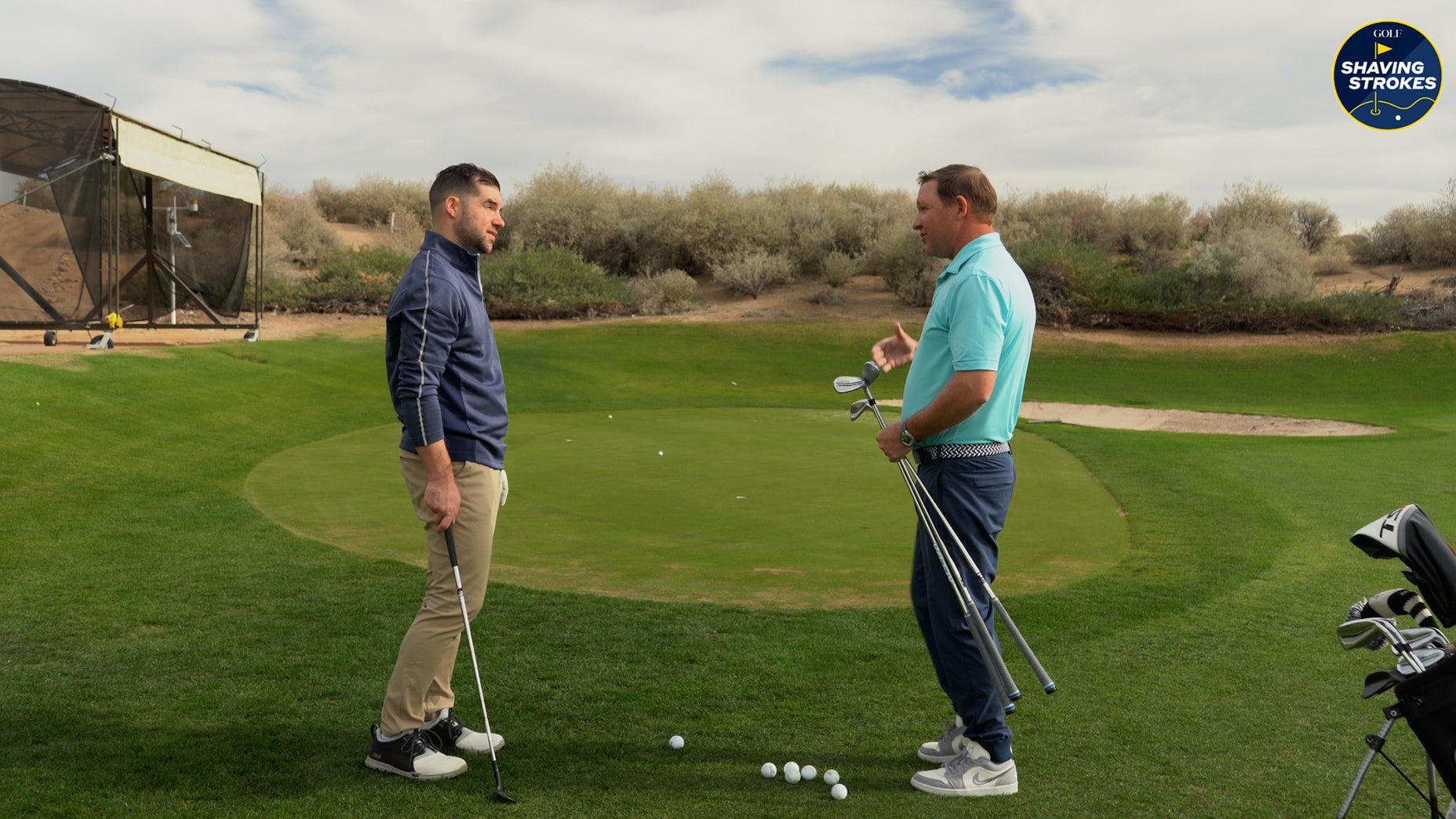There are different ways to hit a bump and run, you just need to understand how to do so effectively.
GOLF.com
Welcome to Shaving Strokes, a GOLF.com series in which we’re sharing improvements, learnings and takeaways from amateur golfers just like you — including some of the speed bumps and challenges they faced along the way.
Like most amateur golfers, I typically default to using some sort of wedge when I’m around the greens — usually a 60-degree (lob wedge). But the problem with doing that is it puts more pressure on me to be nearly perfect in my execution.
Sure, there’s a time and place when attempting to hit a flop shot can be fun (despite how difficult it is for a mid-handicapper like myself), but most of the time, just hitting a simple bump and run is the way to get your ball close to the hole.
For instance, just the other day I was hitting balls with my father-in-law around the short-game area. We were both using our lob wedges and we both struggled to find any sort of consistency. That’s when I ditched the damn thing and decided to go to a bump and run instead — which led to me taking his money on our closest-to-the-pin challenges.
The best thing about the bump and run is that it’s nearly foolproof. Whether you’re an experienced pro or just a beginner, everyone can usually keep the ball low and watch it roll.
In a recent lesson with GOLF Top 100 Teacher Mike Dickson, he showed me a new way to hit a bump and run. While the trajectory and roll looks the same, Dickson had me reimagine my club selection — and the results were absolutely lethal.
Reimagine the bump and run by expanding your club selection
In the video above, Dickson explains how so many golfers work on their full swing to hit the ball better, but when they get near the pin, they often see scores balloon because of poor club selection.
“We get by the green and, all of a sudden, we start choosing the wrong tool,” he tells me. “So we want to get the ball on the ground, and this is very common, everyone grabs the club with the most loft in the bag because we’re close to the green.”
Dickson points out the difference in loft between the putter (which typically has 3-4 degrees of loft) and the lob wedge (which has 60 degrees of loft), and how players generally misuse the latter while around the putting surface.
“If you’re just off the fringe [of the green], you’ll probably putt it,” he adds. “If I take one step back, though, I’m going from 4 degrees to 60 degrees? That doesn’t make any sense.”
This is where Dickson says more players should experiment with unconventional club options while around the green.
“So we’re going to do a bump and run,” he says. “A short chip is going to be a pitching wedge, a medium chip is going to be an 8-iron, and the long chip is going to be a 6-iron.”
Wait, what? Dickson’s really suggesting I use either an 8-iron or a 6-iron from about 35 feet from the pin? That’s not somewhere I would have arrived on my own, but his logic checks out. Let’s get it!
“We’re going to start with the 8-iron, so what I want you to do when you hold the club up is zero out the left wrist,” he explains. “We do that by putting the grip right underneath the thumb pad instead of under the heel pad. This is the only shot we’re going to grip down on.”
The image below shows how this should look.

GOLF.com
Next Dickson has me address the ball, making my setup mirror that of a typical putting motion.
“Pull your elbows in slightly, and then bow to the ball. We’ll probably be about 10 inches away from the ball with our toes,” he instructs me. “The heel of the club is actually up off the ground, so less of the club is going to grab.”
As I hit my shot, I use a backswing of about 20 percent, which ensures the ball goes about one-third of the distance to the cup, and then rolls the rest of the way.
Finally, Dickson explains what most amateurs do wrong when trying to hit a bump and run.
“People don’t get close, so I want to get that shaft more vertical,” he says. “I don’t want power here, I want precision.”
By rethinking your strategy around the greens and expanding your toolbox of club options, you’ll have more shot types — including the bump and run — to get your ball to finish closer to the hole.
TaylorMade Qi10 Max Custom Hybrid
$279.99
Introducing the Qi10 Max Rescue. Experience TaylorMade speed with the forgiveness of Qi10 Max, delivering your easy-to-hit tool for replacing long irons.
MAX FORGIVENESS
Extreme perimeter weighting and ultra-low CG create versatility and max forgiveness with the Qi10 Max Rescue. This user-friendly design is engineered for high launch and long carry distances.
LARGER CARBON CROWN
The larger carbon crown creates a strategic advantage for optimal mass redistribution and enhanced forgiveness.
View Product







